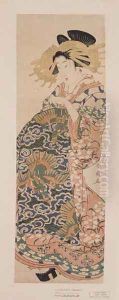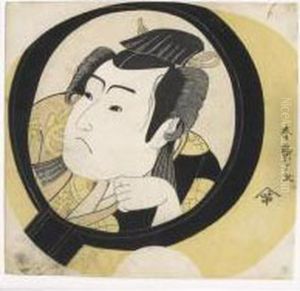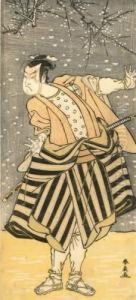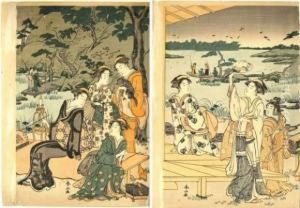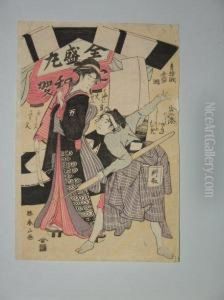Katsukawa Shunzan Paintings
Katsukawa Shunzan was a Japanese artist who was active during the late 18th century, specifically from around 1782 to 1798. His exact birth and death dates are not recorded, which is not uncommon for artists of this period. Shunzan was part of the Katsukawa school, which was renowned for its ukiyo-e woodblock prints and paintings. The school played a significant role in the development of the ukiyo-e genre, which depicted the 'floating world' of hedonistic pleasures of the urban population during the Edo period (1603-1868) in Japan.
Shunzan produced a variety of works, including single-sheet prints of bijinga (pictures of beautiful women), yakusha-e (actor prints), and sumo-e (sumo wrestler prints). His style is characterized by a delicate use of line and a somewhat subdued color palette when compared to some of his contemporaries. Although his works were less flamboyant, they exhibit a keen observation of the human form and a refined approach to composition.
As a member of the Katsukawa school, Shunzan was influenced by the school's founder, Katsukawa Shunsho, who was an innovator in actor portraiture. Shunzan's bijinga often reflect the elegant and idealized forms of women's fashion and beauty of the Edo period, while his yakusha-e focus on capturing the expressive qualities of kabuki actors of his time.
Unfortunately, Shunzan's legacy is somewhat overshadowed by his more famous peers and successors, such as Katsukawa Shun'ei and Katsukawa Shunko, as well as the later, more prolific artists like Katsushika Hokusai and Utagawa Hiroshige. As a result, little is known about Shunzan's life beyond his artistic production, and his work has been studied primarily within the context of the Katsukawa school's overall contribution to ukiyo-e.
Despite the limited information on Shunzan's life and the relative scarcity of his works, he remains an appreciated figure within the study of ukiyo-e for his contributions to the genre's evolution during a vibrant period of Japanese art and culture. His prints continue to be admired for their elegance and historical value, providing insight into the aesthetics and popular culture of Edo-period Japan.
